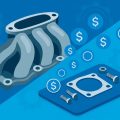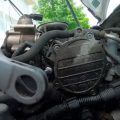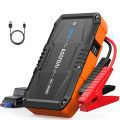This step-by-step guide provides a comprehensive approach to troubleshooting common connection issues with Bluetooth OBD2 adapters, which are vital for diagnosing vehicle problems and monitoring performance. The guide outlines essential troubleshooting steps, including ensuring the adapter is properly plugged in, checking Bluetooth settings on your device, verifying compatibility with your vehicle, and restarting both the adapter and your mobile device. By following these steps, users can effectively address connectivity issues and ensure reliable communication with their vehicle’s onboard computer.



Check Compatibility
Verify that your Bluetooth OBD2 adapter is compatible with your vehicle’s make and model. Check the adapter’s manual for a list of supported vehicles or specifications. Pay close attention to the following details:
- Confirm the OBD2 protocol supported by your vehicle (e.g., ISO 9141, KWP2000, CAN).
- Investigate any vehicle-specific requirements that may affect compatibility, such as engine type or year of manufacture.
- Compare your vehicle’s model and year against the compatibility list provided by the manufacturer.
Explore the manufacturer’s website for additional compatibility information. Locate the section dedicated to your specific adapter model to find detailed compatibility guidelines. Follow these steps:
- Enter your vehicle’s make, model, and year in the search tool, if available.
- Review customer testimonials or FAQs regarding compatibility issues.
- Contact customer support via email or phone for direct assistance if unsure about your vehicle’s compatibility.
Verify Bluetooth Connection
Turn on your vehicle. Ensure that the ignition is in the “On” position, but the engine does not need to be running. This action activates the vehicle’s Bluetooth system, allowing it to search for devices.
Enable Bluetooth on your smartphone or device. Navigate to the settings menu and find the Bluetooth option. Turn it on, then search for available devices. Check the list to see if your OBD2 adapter is displayed. If it is not listed, follow these steps:
- Reset your device’s Bluetooth.
- Turn off Bluetooth on your smartphone or device, wait a few seconds, and then turn it back on.
- If the issue persists, restart your smartphone or device to refresh the Bluetooth settings.
- Retry the search for available devices to see if your OBD2 adapter now appears.
Inspect OBD2 Port
Locate your vehicle’s OBD2 port, typically found under the dashboard near the driver’s seat. Look for a trapezoidal connector, which is usually located within one foot of the steering column. If you have difficulty finding it, consult your vehicle’s owner manual for specifics. Common locations include:
- Beneath the steering wheel, just above the pedals
- Near the center console, between the driver’s seat and the passenger seat
- On the driver’s side, near the fuse panel
Inspect the port for any debris or damage, as a clean and intact connector is essential for proper communication with diagnostic tools. Use a flashlight if necessary to get a clear view. Check for dirt, dust, or any foreign objects that might obstruct the connection. If you notice any debris, gently clean it out with a soft brush or compressed air. Ensure that the Bluetooth adapter is firmly plugged into the OBD2 port; a loose connection can prevent your diagnostic tool from functioning correctly. Wiggle the adapter slightly to confirm it is secure, and verify that there are no visible signs of wear or damage on the connectors.
Restart Devices
Restart your smartphone or device by powering it off completely. Locate the power button, press and hold it until the power menu appears, then select “Power Off” or “Shut Down.” Wait for a few seconds after the device turns off, then press the power button again to turn it back on. This process clears temporary files, refreshes system resources, and can help eliminate minor software glitches that might interfere with Bluetooth connectivity. Once the device has restarted, check that your mobile operating system is up to date to ensure optimal performance with your Bluetooth OBD2 adapter.
Restart the Bluetooth OBD2 adapter by unplugging it from the vehicle’s OBD2 port. Wait for about 10 seconds, then plug it back in securely to the port. This action resets the adapter’s internal software and can resolve connection issues that may have arisen during use. After reconnecting the adapter, ensure that your smartphone or device is searching for Bluetooth devices. Once the smartphone detects the adapter, select it to establish a fresh connection. This simple restart sequence helps create a stable link between the devices, improving overall functionality.
Update Software
Check for updates for your Bluetooth OBD2 adapter’s firmware by visiting the manufacturer’s website or app that you use to connect with the adapter. Locate the section dedicated to downloads or firmware updates. Download the latest firmware file onto your device, adhering to any specific instructions provided by the manufacturer. Once downloaded, follow the prompts within the app or connect your OBD2 adapter to your computer to upload the new firmware. This process may involve putting the adapter into update mode, so consult the user manual for precise steps. Keeping your adapter’s firmware updated ensures that it operates efficiently and maintains compatibility with your vehicle’s onboard systems.
Check for updates for the app used alongside your Bluetooth OBD2 adapter by navigating to the app store on your device. Search for the app, then select it to view its details. If an update is available, tap the update button to download and install the latest version. Regularly updating your app can fix bugs, enhance features, and improve overall performance, ensuring that you have the best possible experience when diagnosing or monitoring your vehicle. Additionally, updates may introduce new compatibility with different vehicle makes and models, further enhancing the functionality of your Bluetooth OBD2 adapter.
Final Thoughts on Connection Troubleshooting
In conclusion, troubleshooting a Bluetooth OBD2 adapter connection can be straightforward if you follow the outlined steps. By ensuring compatibility, verifying connections, and keeping your devices updated, you can resolve common issues and enhance your vehicle diagnostics experience. Remember, a little patience and systematic checking can go a long way in achieving a successful connection. Happy troubleshooting!







Thanks for your comment! One advanced tip is to play around with the different diagnostic modes on your BlueDriver app. Also, try connecting to different devices to see if you get better data reporting. Let us know how it goes!
Hey, great guide! I’m wondering if anyone has some advanced tips for getting the best performance out of my BlueDriver OBD2 adapter. I feel like I’m missing some features. Anyone know any hidden tricks? Thanks!
Anyone else having issues with the Torque app while using their OBD2 adapter? I feel like the app is a bit buggy, especially when I try to log data. Would love to hear if others have faced this too!
You’re not alone! Torque can be a bit finicky with certain adapters. Make sure you have the latest version of the app, and try clearing the cache. It can make a difference!
I just wanted to share that using the FIXD OBD2 adapter has been a game-changer for my car diagnostics! Followed your steps and it connected seamlessly. Highly recommend it!
Awesome to hear that the FIXD worked well for you! It’s always great when things go smoothly. Thanks for sharing your success story!
I’ve been having a tough time with my BAFX Products OBD2 adapter. It won’t connect, and I’ve tried everything in the guide. My phone sees the adapter, but it keeps saying ‘connection failed.’ Any ideas?
Sorry to hear you’re having trouble! Have you checked if the adapter’s firmware is up to date? Sometimes a simple update can solve the connection issues. Also, try resetting your Bluetooth settings on your phone and reconnecting.
Just a heads-up for anyone using the ELM327 adapter: make sure your car is in the ‘On’ position when you try to connect. I learned that the hard way after wondering why it wouldn’t sync with my phone. Hope this helps someone!
Great tip! Many people forget that little detail. It can save a lot of frustration. Thanks for sharing your experience!